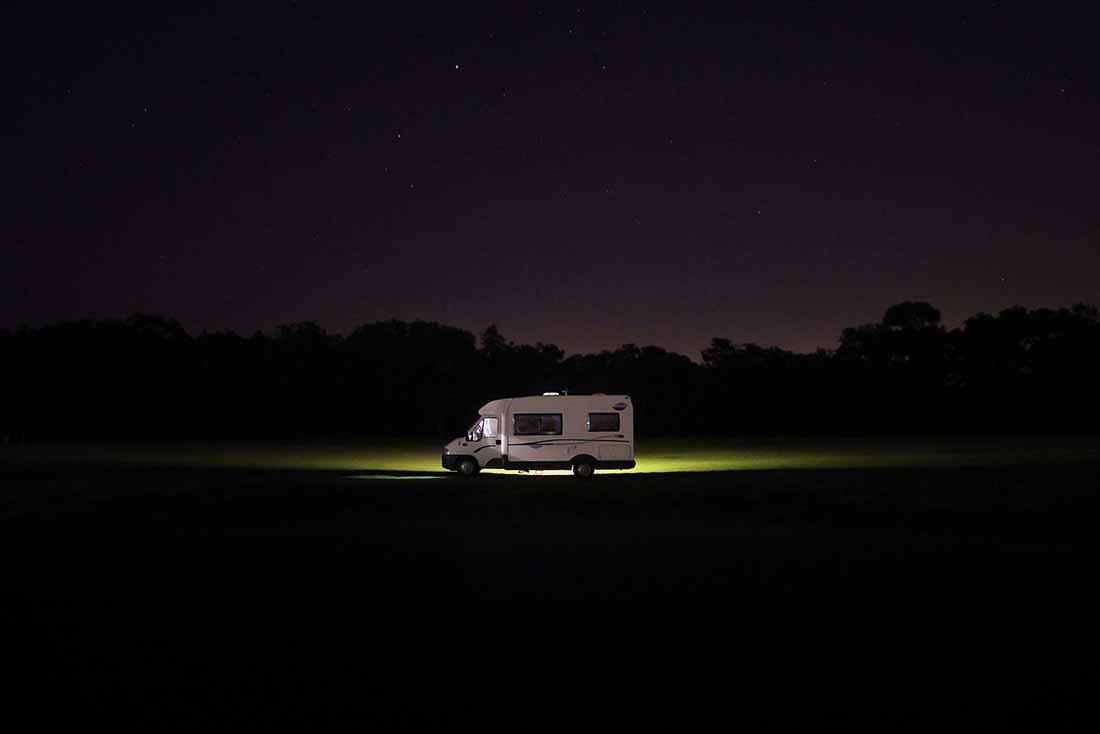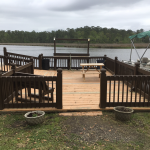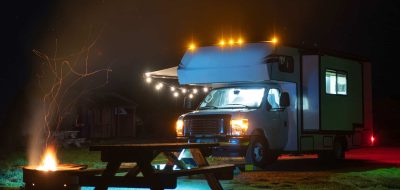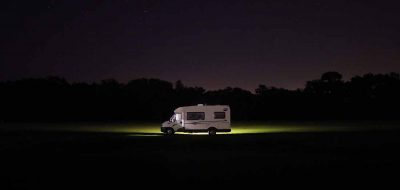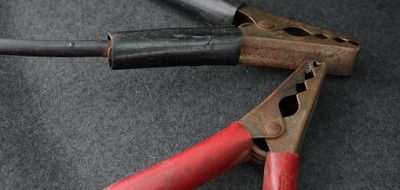Hi, Mark My Words readers! This month, we have a bunch of quick and easy fixes for common RV problems including electrical enigmas, hot brakes and house battery drainage. Check them out, and keep those questions coming to [email protected].

Photo: Escapees
Mark,
I have a Class A motorhome with large day/night window shades in the living room area. These shades will not stay open, a condition that has developed over the last several months. Can you recommend a fix?
Sincerely,
Richard
Mark, thank you for what you do.
I have a real head-scratcher. I can’t find this specific issue in online research, and my repair shop wants me to bring the RV in (of course). I will take it in if need be but don’t want to go to trouble and expense if it’s something simple that I’m missing. We have a 2008 Coachmen Concord 300TS. In a campground last weekend on shore power, we had the AC running, but the thermostat kicked the system into idle because we had reached set temp. We forgot the AC was on and turned the microwave on to heat supper. Everything was fine until the AC cycled back on. Then we lost shore power and went to coach batteries.
I checked inside breakers; none tripped, none soft. I reset all one-by-one. Checked fuses, all were good. Breakers had no effect, whatsoever. Interior lights are working, but nothing else is, including receptacles. I checked the GFCI plug; it looks OK, no burnt wires on the back, but won’t reset. The circuit breakers on shore power post are not tripped, the campground host checked the receptacles on the pedestal, all have power. I ran an extension cord from the 15-amp receptacle on the post to keep cell phones charged and run a small fan inside.
By now I’m thinking transfer switch, but don’t think I have one because I have to plug my shore power cable into a female receptacle in the cable storage area in order for the generator to work. I did that and started the generator; no power, no charge to batteries. On the way home (a 2-hour drive), the rig batteries were charging by the alternator.
One other weird thing: the male end of the RV power cord is showing some burn. Could this be the problem? If so, can I just replace the plug?
Thank you,
Art
Hi Art,
I’m thinking the problem may be in the power plug itself. If yours comes apart, pull it apart and see if you have any burned or disconnected wires inside. If it’s molded on, I would take the chance and get a replacement power plug, cut the old one off, and replace it. That seems to me to be the most likely point of failure with your symptoms.
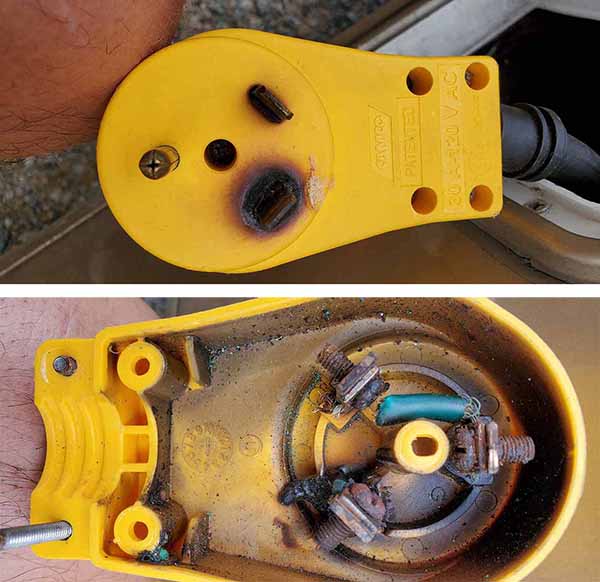
Photo: Art
Mark,
You were correct, as the photos show (right)! It cost me $12 for the plug from Lowe’s, about an hour of my own time and a few words I won’t say in front of my grandchildren. Thanks again, you are the man — you probably saved me $300.
Cool beans, Art! Glad it’s fixed
It’s the corrosion that kills those plugs. As the wiring connections start to corrode, their resistance increases, which causes heat when the connection is under load. The heat encourages more corrosion (and resistance), and eventually, the connection fails. That’s why it’s important to keep the blades of the power plug clean and shiny.
Mark,
Recently, I got the scare of my life. After driving down a steep grade for 10 miles, I suddenly realized my brake pedal was getting spongy, and as I got to a level portion, the pedal went to the floor. Fortunately, I was able to get into an empty lane and then off the highway to a rest stop. As I pumped the brake, I gained a little function. I stayed overnight off-road and the next morning found that my brakes were functional again. I went right to a Chevy dealer and had the system checked out and they found nothing wrong. I drove the rest of the way home — a few hundred miles without a recurrence, but all the way I was very nervous. It could happen again. My RV is a 28-foot Allegro Bay with a gas engine and 50,000 miles on the tachometer. Before this trip, I had my brakes checked by my mechanic and he told me I was in good shape. What is your best guess?
Thanks,
Steve

Photo: Casey Horner
Hi Steve,
No guesses required! What you experienced was almost certainly brake fade, caused by overheating of the brakes on your rig. Overheated brakes can be caused by descending long downgrades, and in severe cases, brake fade can result in a total loss of braking. Once the brakes cool down, the brakes will work again. However, severe overheating can also cause damage to the brake components, warping rotors, melting seals, etc. The good news: it’s easy to prevent!
Whenever you start down a long grade, always keep your speed low and downshift to use your engine to help slow the RV. On really steep grades, like 10 percent or more, grab first gear and really take your time. Don’t ride the brakes all the way down the hill. Apply brakes with moderate pressure to reduce your speed and then get off them if you can. If you start to feel a reduction in braking effectiveness, pull off the road if you can do so safely and bring the vehicle to a stop while you still have working brakes. Let your brakes cool for at least 30 minutes, and then continue on down the hill.
Hello Mark,
I have a Damon Intruder that has two house batteries. Two new batteries were purchased and installed just before leaving for an all-day drive (about 9 hours). When we dry-camped for the night, the temperature outside required the furnace to be used during the night. By morning, the house batteries would not run the furnace any longer. Is it normal for the house batteries to discharge that far overnight? The only other items that were drawing are the refrigerator and the clock on the microwave.
Thank you for your answer,
Katharine
Hi Katharine,
Your RV furnace consumes a lot of power. Most furnaces draw 5-7 amps when running. While it’s not unusual for a furnace to significantly drain your house batteries on a cold night, I wouldn’t expect one night’s use to totally run them down. One thing to check for would be “phantom loads.” These are 12-volt DC loads that are drawing current that you are not aware of. A classic example would be a light in a closed outside compartment that has been left on. One or more loads like this will really make a difference in how long your batteries last when you are boondocking.
Also, what kind of batteries did you purchase? Hopefully, you bought deep-cycle batteries intended for RV use. So-called “marine/starting” batteries and normal automotive starting batteries are not suitable for house-battery use and will have a lot less usable capacity than a true deep-cycle battery. Another possibility is that, for some reason, your vehicle alternator is not actually charging your house batteries or is only partially charging them. If you are handy with a digital voltmeter, you can check to be sure that the vehicle alternator is bringing the voltage at the house batteries up to at least 14 volts when the engine is running. If you aren’t sure how to check this out yourself, then this may be a good question for an RV service tech.
Below are a few helpful comments from readers:
Mark:
I have found that no matter what I get on my awning, Mold, tree sap, any discoloration, a product called Spray Nine will remove it. Generally available at most grocery stores in the cleaner isle or Walmart. This product also works amazingly well on bugs on the front of the unit and vehicle. It does not affect the finish.
Jeff
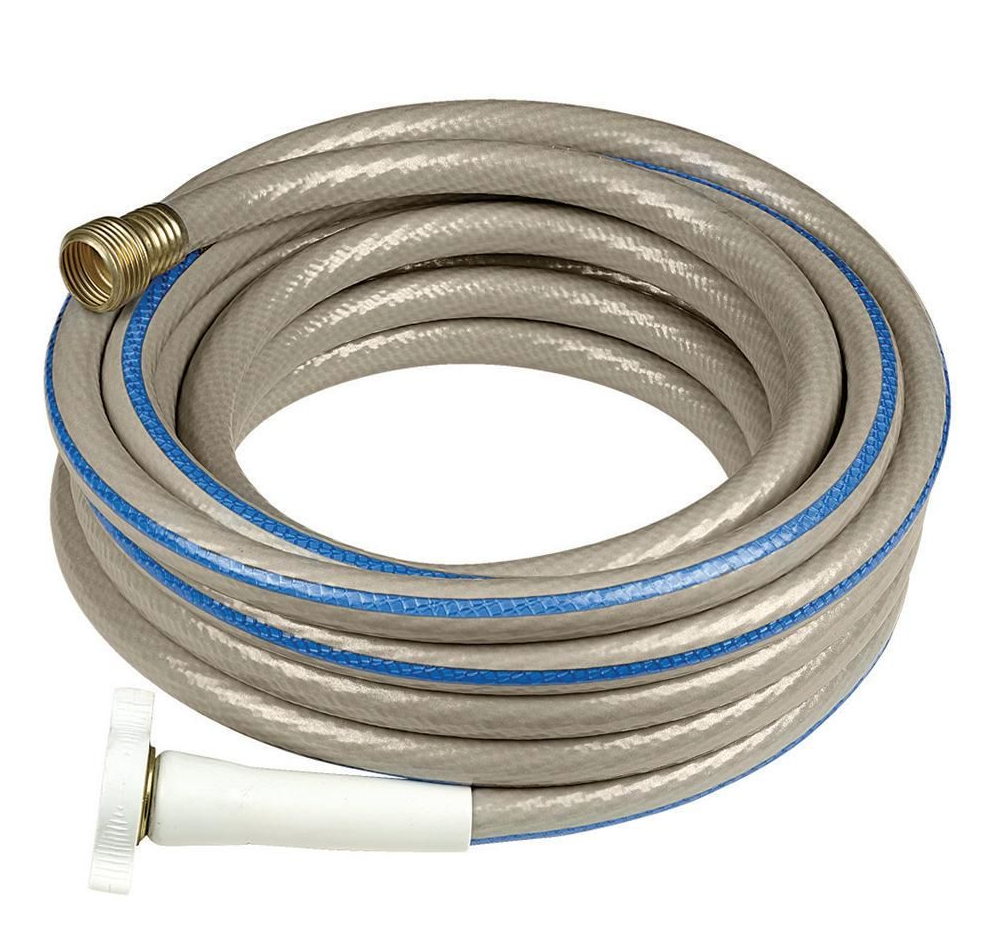
Photo: Camping World
Hello Mark,
In your November post, you said, “I don’t know of any really good way to clean the inside of the hose, so when mine gets funky, I retire it to garden hose use and buy a new potable water hose.”
My freshwater tank has a garden hose fitting on the drain. When I sanitize my tank, I drain it through the freshwater hose and that usually does a good job of cleaning/sanitizing the hose. Plus, it also ensures that I don’t get bleach splashing where I don’t want it.
Another option that I’ve used is to fill a 5-gallon bucket with a water/bleach solution. I then coil up the fresh water hose (without the ends connected) and submerge the hose in the bucket. I’m sure this works because when I take the hose out after an hour or so there’s plenty of fluid to drain out of the hose.
Also, in your November post, you talked about replacing incandescent bulbs with LED bulbs. I did that two years ago with bulbs that had good reviews on Amazon. I have been less than impressed for two reasons. 1) A number of those bulbs started blinking. 2) The light output wasn’t what I was hoping for. The old fixtures weren’t made for LED, and the LED bulbs produce light in a 360-degree array, with half of that shining back into the fixture, which wasn’t doing a great job of reflecting light. I added reflective tape to the fixture and that helped a bit. Eventually, I gave up and replaced the fixture with one that was designed for and came with LED bulbs that produced light in only a 180-degree array (down). I’m satisfied with the new fixtures but I’m still experimenting. LED strip lights have really changed up how light is displayed.
Thanks for your blog! I’ve learned a lot. Jim

